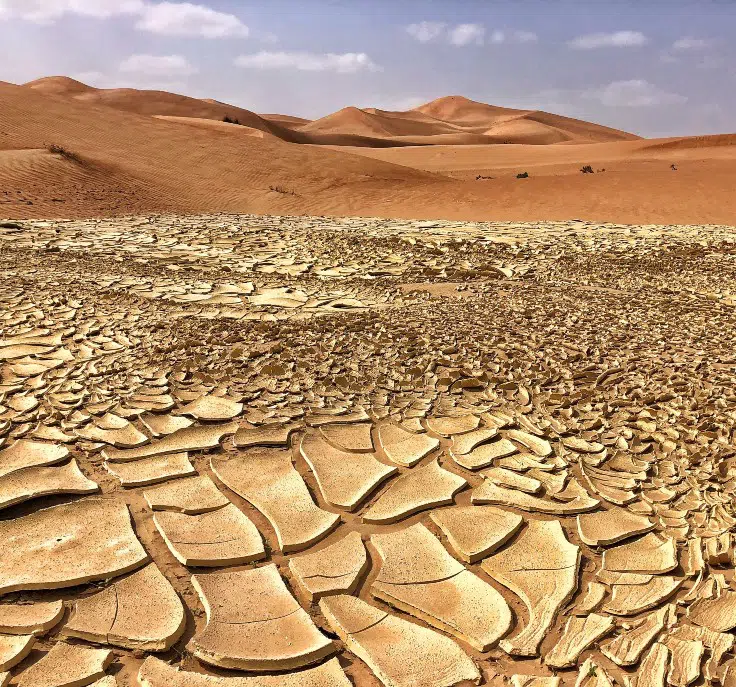SUSTAINABILITY| 28.01.2022
Sustainable food and the keys to reducing our carbon footprint
January 28 is the International Day for the Reduction of Global CO2 Emissions, also known as the Global Day of Action on Climate Change. The main objective of this day is to raise awareness on the problem of global warming and its consequences. It also highlights the need to reduce CO2 emissions and implement changes to meet this objective, such as a commitment to sustainable food.
This day was designated by the United Nations (UN) as a key opportunity to make decisions that benefit the environment while encouraging the development and application of policies to lower emissions. Key measures include boosting investments to develop renewable energy sources, switching to cleaner fuels, achieving more efficient combustion processes, and modifying consumer trends through environmental education.
Decarbonization is not a matter of choice for many companies, like MAPFRE, that aim to become carbon neutral. To meet this challenge, we must be aware of what our carbon footprint currently is and identify strategies to reduce that footprint and offset whatever we cannot eliminate. Our activity contributes to SDG 3 (Good Health and Well-Being); SDG 7 (Affordable and Clean Energy); SDG 11 (Sustainable Cities and Communities); and SDG 13 (Climate Action).
What is a carbon footprint?
A carbon footprint is the whole of greenhouse gas (GHG) emissions caused by an individual, organization, event or product, either directly or indirectly.
CO2, or carbon dioxide, is one of the most widely known greenhouse gases (GHG) due to its significant impact on climate change, although there are many others. When these gases enter the atmosphere, they trap some of the heat from the sun’s rays, acting like a greenhouse, because without them our planet would be covered in ice. The climate changes and behaves differently when the amount of gases increases and alters equilibrium. Experts warn that the climate is becoming more extreme for this reason. In recent decades, CO2 emissions into the atmosphere have increased dramatically, due largely to the use of fossil fuels (oil, gas and coal).
Can CO2 emissions be reduced?
Absolutely, without a doubt. Changing this situation and saving our planet depends on our actions.
The European Union has taken the lead on policies to fight climate change, but countries must commit to meeting the global targets that have been set. We must call on governments and institutions to develop and apply policies, but we can also do our part as citizens.
- Apply the “three Rs” of the environment
The “three Rs” rule is widely known. The first “r” stands for reduce: consuming less by avoiding unnecessary purchases. The second is for reuse, or extending products’ life cycle as much as possible to prevent them from becoming waste. And the third “r” is for recycle, making use of the materials, manufacturing new products with materials obtained from used products.
- Choose more sustainable forms of transportation
Transportation is another major source of CO2 emissions. By using public transportation or choosing to bike or walk instead of taking a car or motorcycle, whenever possible, we can reduce our emissions and contribute to the fight against pollution.
- Boost energy efficiency and use renewable energy sources
Energy waste, mainly originating from fossil fuels, can cause CO2 emissions to spiral out of control. To improve this situation, we can use energy-efficient systems that achieve the same production with lower consumption. We can also use renewable energies to prevent more CO2 emissions from being released into the atmosphere.
- Offset CO2 and conserve carbon sinks
Offsetting involves a voluntary economic contribution, proportional to the tons of CO2 generated. This can be accomplished through a carbon-sink project for reforestation, neutralizing the amount of CO2 generated by our activity, or by avoiding emissions through an energy-efficiency project that replaces fossil fuels with renewable energy sources. It is also important to conserve carbon sinks: forests and oceans trap CO2, so by maintaining them, we can prevent some GHG emissions from reaching the atmosphere.
What role does food play in reducing GHG emissions?
Today up to 37% of greenhouse gases produced worldwide originate from food systems. The need to switch to more sustainable diets and food systems is becoming increasingly clear. However, transitioning to sustainable food systems isn’t as easy as it seems, and it requires investing in more sustainable models for food production, processing, distribution, and consumption. According to the FAO, sustainable food goes beyond nutrition and the environment and includes economic and socio-cultural aspects.
What is a sustainable diet, and how can I adopt one?
Sustainable diets are defined as diets with low environmental impacts that contribute to food and nutrition security and to healthy living for present and future generations. They are also protective and respectful of biodiversity and ecosystems, culturally acceptable, accessible, economically fair and affordable; nutritionally adequate, safe and healthy while optimizing natural and human resources
Here are some ideas to help you achieve a sustainable diet:
- Make sustainable diet choices: eat a diet consisting mainly of plant-based foods, which may be supplemented with a modest intake of animal-based products. To adopt a sustainable diet, the top recommendations include buying fewer processed foods, prioritizing fresh products and, in the case of fish, choosing products from sustainable fisheries.
- Consume locally grown, seasonal food: this supports agriculture that conserves biodiversity and is respectful to the environment and fauna. In addition to supporting the local economy, buying seasonal products helps reduce greenhouse gas emissions by avoiding food transportation. Seasonal products offer the best quality and price, as they are harvested at their peak of ripeness. We must continue to support local, ecological production, and it’s important for the authorities to back a local, sustainable model that enables rural communities to thrive.
- Reduce food waste: every year, approximately one-third of food produced for human consumption is wasted worldwide. We cannot forget that wasting food means wasting all the human, natural, and material resources used to generate food products. By reducing our food waste, we can lower greenhouse gas (GHG) emissions and encourage a fairer, more equitable distribution of resources. This issue is essential to sustainability and one of the objectives of the Sustainable Development Goals (SDGs).
- Choose zero-waste supermarkets and co-ops: these new models are emerging as alternatives to the large companies that drive the industrial model we are accustomed to. They are playing an important role in the food revolution that is taking shape. At these supermarkets, we can buy groceries in-bulk to avoid the use of plastics, which reduces the impact of packaging and lowers costs.
What are MAPFRE’s commitments in the fight against climate change?
As you can see, climate change and reducing the carbon footprint are important goals for every country. The energy transition towards a decarbonized economy is underway. At MAPFRE, we are working to comprehensively strengthen our environmental, social, and governance risk analysis models. We continue to make progress on our commitments to the UN’s 2030 Agenda and on our strategy to fight climate change, backed by the different actions we explain here, such as our commitment to decrease the group’s carbon footprint by 67%, or MAPFRE’s pledge to become carbon-neutral by 2030.
Related articles




